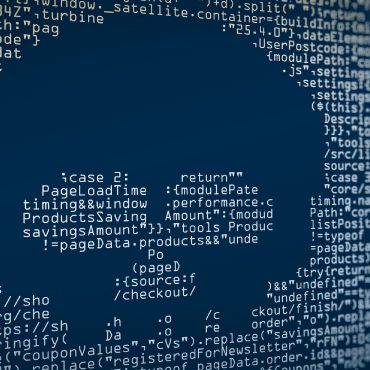What is virtual patching?
What is virtual patching? It’s an important technology for IT professionals to understand. With the rising threat of security vulnerabilities, every business needs to be knowledgeable about how to protect their information and data from outside attack. Virtual patching helps businesses to offer a second layer of protection to prevent exploits of the existing vulnerabilities and provide them with time to test, deploy and maintain virtual patches in compliance with the Security Rule set by the organization.
Vulnerability assessment and patch management using Vulnerability Assessment and Collaborative Research (VADV) are the foundation of what is virtual patching solutions. These are used together to achieve complete system patch management, fix vulnerabilities and deliver end-to-end security. VADV and other types of testing techniques can be applied to help organizations identify vulnerability, develop a patch and then test it in the production environment. The patch can be tested on a live system to verify that it works before it goes live. It also tests the integrity of the patch using multiple scenarios to ensure the patch is robust enough and complete.
When looking for solutions to patch web application, it’s common for organizations to only consider what is known vulnerabilities. However, the reality is that many applications and web applications exist that do not have known vulnerabilities – they only become vulnerable when under attack. Vulnerability assessment combined with effective VADV and other test techniques can identify and patch known vulnerabilities quickly and reliably in a complete and reliable manner. The combination of VADV and other test techniques results in complete and reliable patch deployment that is also effective and complete in a live environment.

It is vital for organizations to remember that no patch is ever 100% secure. As an organization grows and creates more web applications, the risk of vulnerabilities increases. Organizations must therefore implement strategies to be prepared to deal with vulnerabilities that are newly discovered – in a complete and reliable manner. There are many tools that can help with this and one of the most popular among these tools is the deep security virtual patching solution.
The purpose of this type of virtual patching solution is to create a dynamic defense against known vulnerabilities. These solutions provide an effective solution to patching an application without exposing any underlying server or database issues to the user. These solutions are known as permanent patch generators and can provide the application with a permanent copy of all relevant data so that no patches are required when a new version of the software or program is released.
Most organizations have tried and failed to deal with vulnerabilities that are newly discovered – there are just too many unknowns. But with a deep security virtual patching solution, all known vulnerabilities are instantly patched, and only known vulnerabilities are repaired or replaced. This can provide significant cost savings and time efficiency for any organization. Any software patch will normally require that you first log on to the system to determine if the patch has been applied successfully.
When a system has been patched, users can typically experience a number of symptoms including the immediate execution of their commands. However, organizations that use virtual patching software will not have to worry about these issues because they will not be patched until a vulnerability is found or a new vulnerability is created. This means that the organization does not have to spend valuable time analyzing whether a software patch has been correctly applied or whether it has been successfully implemented.
Another advantage that is provided by deep security virtual patching is that it can prevent the need for another software patch. If a new vulnerability is found, it may only be a matter of time before another patch is created and released for users to apply. A new vulnerability can also be discovered and exploited long before another patch can be created and released for users. Since a majority of patches create security holes, it is imperative that systems are patched regularly to avoid any potential problems. Organizations that use this type of software patching solution will have immediate access to known vulnerabilities, but they will not have to wait for a technician to apply a new patch in order to resolve the issue.
How virtual patching works
How virtual patching works is a complex thing that has been the subject of multiple research papers, white papers, technical papers, presentations, and more. It basically revolves around how developers and system administrators to mark out the latest version of a patch in a remote server. The patch then gets deployed in a system, with the purpose of fixing security flaws that might have been discovered in an earlier release. This process can be likened to a “lean patch” which, instead of becoming available to users, gets deployed as soon as discovered.
In addition to this, virtual patching helps reduce the costs of software and hardware upgrades and brings down the probability of system downtime. Also, virtual environments provide IT professionals and system administrators with a flexible way to manage the patching of their patches. For instance, they can determine which processes require additional time to complete and which may not need to be fixed right away. They can also determine the number of changes that need to be applied for a particular patch release. Lastly, it improves regulatory compliance by ensuring that software and hardware manufacturers are able to make constant improvements to their products and services.

How does a patch become a virtual environment? Well, when a patch is created, then it is not actually designed to be used on a live environment; it is designed to be used in testing and QA. In other words, a patch becomes a “virtual” environment when it is being developed and tested as a unit. All the relevant testing is completed in a controlled environment, so that when the patch is deployed in a production environment, there will be no problems with the actual code. With this type of deployment, patches get the “look” that they need to satisfy both the end users and the developers before getting submitted to the development team and made available to the users.
In order to understand how this works, you need to understand what vulnerabilities are and what can cause them. vulnerabilities are when an application or web application uses a piece of functionality that is not correctly used or implemented. In addition, vulnerabilities can be when the software uses a feature that is not documented or that is not supported by the operating system that is being used. Basically, there are two sides to every question – what caused the vulnerability and what can be done to fix it. When both of these are answered, then the question of how to resolve the problem is easier to answer.
The reason how virtual patching works is that a vulnerability that is found during a vulnerability assessment is not going to necessarily be discovered during a manual audit. A manual audit would probably find at the most ten different problems. However, if you apply ten different patches (out of the hundred or so that are on the Internet) to the same software, you are only going to fix one of the problems. This means that the ten patches will only address one of the issues that the software has, but the other ten will have no bearing on the problem.
The way this all works is that when patches are applied, they are not applied in the actual software. Instead, they are created within a virtual environment. Virtual environments are just a fancy term for a virtual machine. What happens is that a vulnerability assessment identifies a number of different issues with a software product. However, because these issues are on a remote server, it doesn’t matter if the person viewing the site actually has the correct program installed on their machine. The vulnerabilities that the site detects are then translated into a patch and then are stored on that remote server.
The reason why it works so well is because of the cross-revisioning that is done. What happens here is that multiple versions of the same vulnerability are identified on the remote server, which then causes the software to be confused and think that there are multiple problems with the file. In fact, since the file isn’t actually broken, the software will try to fix the issues it identifies, but since it cannot find the exact vulnerability that it needs to fix, it will simply apply a generic patch from the Vulnerability Assessment database onto the vulnerable application.
As you can see, this type of security patch is very similar to physical security patches. The main difference is that security patches can be applied with or without being live. Since virtual environments allow for updates to be pushed to the Internet at any time, it is entirely possible to update all of your security patches at once without having to wait on the download. The only thing to keep in mind is that it will take at least a few hours for a new patch to be made available through the Vulnerability Assessment database. It will also take several hours to apply the new patch to your virtual environments.
Benefits of using virtual patching:
There are many advantages and benefits of using virtual patching. One of these is that it provides for a fast and efficient recovery of data. The time taken to patch a computer depends on the software being used on the computer. It also depends on the type of problem that requires to be solved and the type of software that is used on the computer.
Virtual patching technology was first introduced in the year 1989, with the support of the USENET network. Since then, it has been used extensively. It allows for seamless recovery of system files from all remote locations.
There are many advantages of virtual Patching. For example, there are systems that can be patched without restarting the computer. This is ideal for patching slow running programs. The whole operation is automated, so there will be no user intervention required.
It has been found that virtual Patching is more effective than manual patching. In the manual process of patching, the operating system boots up and checks for problems. Only when the problems are found, they are fixed. However, with virtual Patching, any new problems will be detected and sent to the programmers.
Virtual patching also helps to maintain the integrity of a system. It prevents a computer from being infected with viruses. These viruses can cause serious problems. There have been several rumors about viruses spreading through Patching servers.

A new service known as VPS or Virtual Private Server was introduced in the market. It uses virtualization technology to provide secure shared hosting for websites. With this service, a single physical server is converted into multiple virtual servers. By using virtual private server hosting, you can enjoy the benefits of using virtual Patching and security features available with VPS.
Many webmasters have already started choosing VPS as their choice of web host. It offers them excellent benefits including affordable price. With a VPS, you can enjoy a high level of security. You can use VPS right away without having to install it on your own system.
There are a lot of advantages available with VPS. And the main advantage of using virtual private server is its flexibility. With this service, you can easily adjust or configure it according to your needs. You can easily install any software and make changes to it. The management of VPS is easy because it uses UNIX like mechanisms. Thus, you will never face any problem while using virtual Patching.
VPS has a great amount of space and functionality. It can support a large number of software. And by using this kind of server system, you will also be able to customize your system. You can add new features and utilities to the system easily. Moreover, it also has a high degree of functionality and stability.
As a webmaster, you should understand the benefits of virtualization in web hosting. When you use a virtual private server, you can enjoy many advantages. You will always have a single operating system. This is a good thing because you don’t have to deal with other systems. Using a virtual private server means that you don’t have to share your disk space with others, which is a major issue in shared hosting.
Another advantage of using virtualization in web hosting is its reliability. You can use virtual private servers even in case of a hardware failure. A hardware failure in a physical server can lead to serious down time and even the system crash. With a virtual private server, however, you can always rely on it even if there’s a hardware failure.
You can also enjoy several features. One of these features is system isolation. If you use a virtual server, you will be able to make your system run faster and without affecting other systems on the same server. The same goes for security. Because you are not using a dedicated system, you will be able to increase the security levels of your system.
All these advantages of using virtual patching are important if you want to enjoy high-performance computing solution. And as you continue using virtualization in web hosting, you will see how useful it is. However, it is never too late to consider switching to a virtual private server. After all, it offers you several benefits that you won’t find in other systems.













Post comments (0)